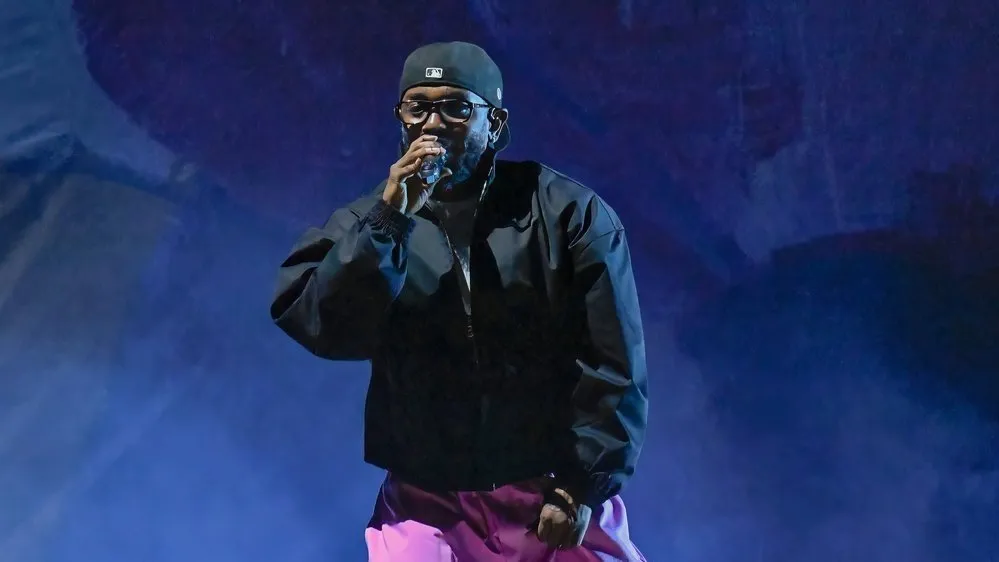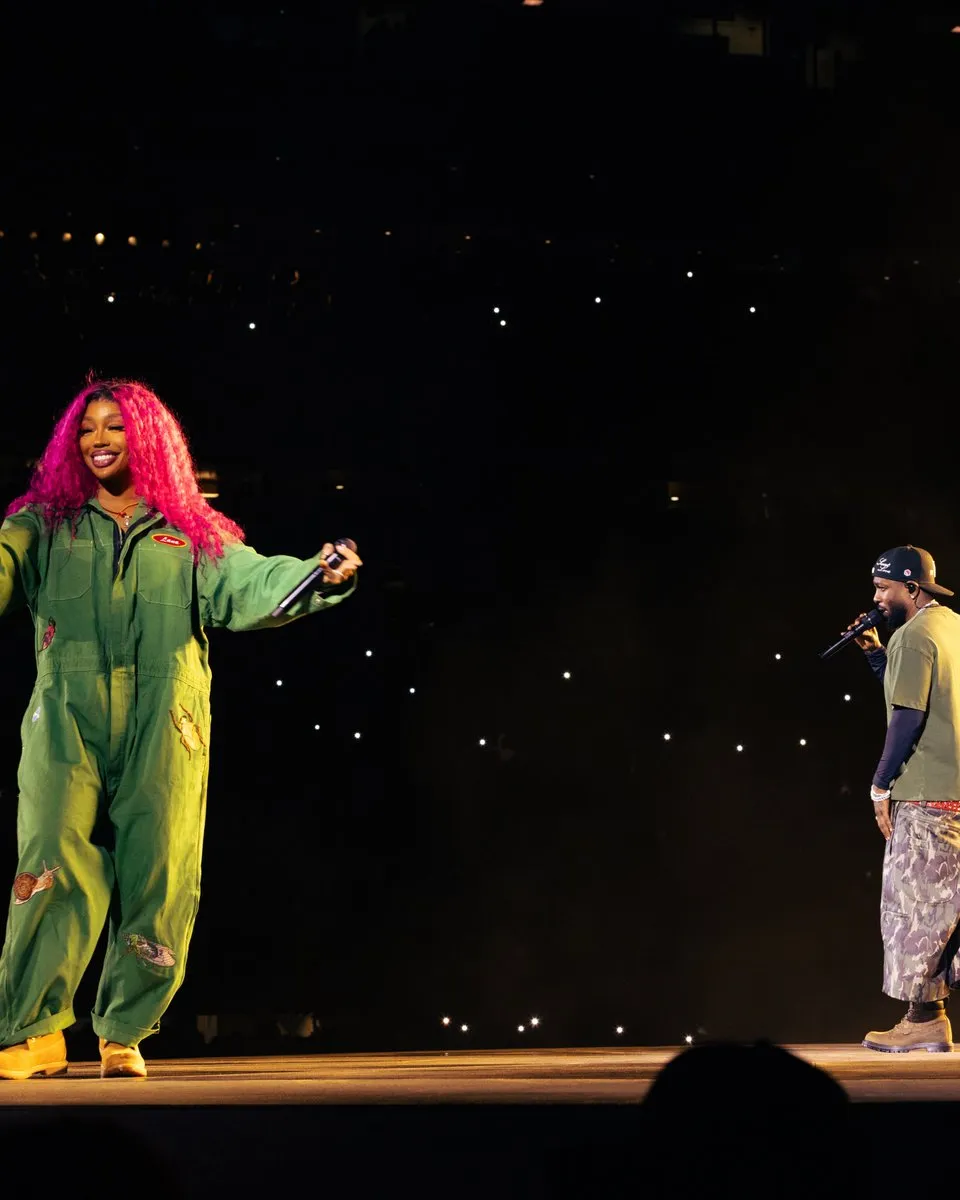

“No One Noticed Me”: SZA’s Painful Confession About Touring With Kendrick Lamar
In an industry where fame often casts a long shadow, SZA, born Solána Imani Rowe, has always shined in her own quiet, magnetic way. But even the brightest stars can feel eclipsed, especially when sharing a stage with a juggernaut like Kendrick Lamar. In a recent raw and revealing interview, SZA opened up about a painful chapter in her career—her experience touring with Kendrick, a time she described as emotionally isolating and deeply humbling. Her confession has sparked intense discussions about visibility, artistic identity, and the silent struggles that often go unseen beneath the surface of music stardom.

A Dream That Turned Heavy
When SZA first joined Kendrick Lamar on tour, it seemed like the realization of a dream. Having been part of the Top Dawg Entertainment (TDE) family, she admired Kendrick’s vision and respected his towering lyricism. Her inclusion in the tour was not just a milestone but a moment of validation. At the time, she was fresh off the success of her debut album “Ctrl”, which had been lauded for its vulnerability, honesty, and genre-defying sound. Expectations were high—for the tour and for her career.
But what followed was not the triumph she had envisioned. “I felt invisible most nights,” SZA revealed. “There were moments where I would pour everything into a performance, and I could still feel the crowd waiting for the next act. Waiting for Kendrick.”
The audience, largely drawn by Kendrick’s iconic status, didn’t always connect with her in the way she’d hoped. And for an artist like SZA—whose entire presence hinges on rawness and connection—that distance was devastating.
The Weight of Comparison
SZA’s confession speaks volumes about the emotional weight of comparison, especially when touring with a larger-than-life figure like Kendrick. While he is a generational talent with Pulitzer Prize-winning lyrics and cultural gravitas, SZA has always carved a more intimate lane—her artistry thrives in the margins, in whispered truths and late-night heartbreaks.
“To be on a stage where people are shouting for someone else while you’re bearing your soul—it does something to you,” she said. “It made me question my worth.”
Kendrick’s presence became a double-edged sword. While it exposed her to wider audiences, it also cast a long shadow that she struggled to emerge from. SZA’s music, though emotionally potent, didn’t always resonate in stadiums where fans were eager for bangers and rap anthems. Her subtler, more meditative sound got lost in the anticipation for Kendrick’s high-energy performances.
This dynamic created a rift between exposure and erasure. “I was there, but I wasn’t seen,” she said, her voice trembling slightly in the interview. “And I started to internalize that. Like maybe I wasn’t enough.”
A Journey Into Self-Doubt
Behind the scenes, SZA’s internal world was unraveling. The tour’s demanding schedule left little time for reflection or recalibration. Each night she walked off stage feeling less sure of herself, haunted by the echo of applause that felt meant for someone else. Despite performing to sold-out arenas, she often returned to her hotel room in tears.
“People think you’re living the dream, and in some ways you are,” she acknowledged. “But success doesn’t protect you from feeling invisible. If anything, it can amplify those feelings because you start to wonder: if I don’t feel seen now, when will I?”
Mental health has long been a topic SZA doesn’t shy away from. In this case, the tour forced her to confront some of her deepest insecurities. It wasn’t just about being overlooked—it was about feeling fundamentally unworthy of the moment she was in. And yet, every night, she went back on stage. Every night, she sang her truth, even if it felt like no one was listening.
Kendrick’s Silent Support
Interestingly, SZA has never framed Kendrick as the antagonist in this story. In fact, she credits him with offering quiet but genuine support during their time on tour. “Kendrick always made space for me. He respected my voice, my art. But he’s not someone who intervenes unless he sees you drowning,” she explained. “And I wasn’t drowning—I was just fading.”
Their relationship, she says, was one of mutual respect. But respect doesn’t always equate to recognition—not from fans, not from critics, and certainly not from one’s inner voice. While Kendrick’s presence was never oppressive, it became a mirror reflecting all the ways she felt not enough.
The Aftermath and the Healing
Coming off the tour, SZA felt emotionally depleted. The experience had given her new insights but also fresh wounds. Yet it also fueled the introspection that would later shape her music. Her sophomore album, SOS, brims with themes of rejection, longing, and self-reclamation. Lines like “I gave it all and got nothing back” suddenly carry a heavier, more personal weight in light of her confession.
“It took me months to recalibrate. To start seeing myself again,” she said. “I realized that you can’t base your value on crowd reactions. Because crowds are fickle, and self-worth has to be rooted somewhere deeper.”
Part of that healing came from fans. After the tour, when she returned to smaller venues and had the chance to interact more directly with her audience, she was reminded of the connection she had once feared lost. Fans came up to her crying, sharing stories of how “Ctrl” had helped them survive heartbreak, anxiety, or identity struggles. “That’s when I remembered why I do this,” SZA said. “Not to be seen by everyone, but to truly reach someone.”
What It Means To Be Seen
SZA’s confession isn’t just about one tour—it’s about the emotional labor of being an artist in a culture that constantly pits people against each other for attention, acclaim, and applause. It’s a meditation on what it means to be seen, and how easy it is to feel erased even while standing under a spotlight.
In the broader conversation about fame, her story acts as a necessary counterpoint. We often celebrate breakthrough moments and sold-out tours without acknowledging the personal cost. For SZA, the cost was a temporary loss of self. But what she gained, perhaps, was something even more enduring: the knowledge that true connection doesn’t require a stadium’s roar. It needs only one person truly listening.
A Cautionary Tale For Emerging Artists
SZA’s experience also serves as a warning to other rising artists. Touring with a superstar can seem like a golden ticket—but without the right emotional tools, it can also be disorienting. The industry’s obsession with virality and proximity to fame can dilute artistic purpose and fracture mental stability.
“I don’t regret it,” she said. “But I wish someone had told me that being on the biggest stage doesn’t mean you’ll feel big. Sometimes it’s the loneliest place in the world.”

Her words strike a chord with countless emerging voices trying to navigate the double-edged sword of exposure. They highlight a truth that is rarely spoken but widely felt: that in chasing recognition, artists often lose sight of themselves.
Looking Forward With Clarity
Today, SZA stands taller—both as an artist and as a person. She’s learned to claim space without apology, to trust the value of her voice even when it’s not the loudest in the room. Her music continues to evolve, now infused with a sense of confidence forged in fire.
And while the memory of that tour still lingers, it no longer defines her. “That was a chapter, not the whole story,” she said. “And if anything, it showed me that being seen starts with seeing yourself first.”
As she prepares for her next tour, one where she’s now the headliner, she carries with her the lessons of invisibility. Not as a wound, but as a reminder of how far she’s come—and how deeply her presence matters now, more than ever.


















